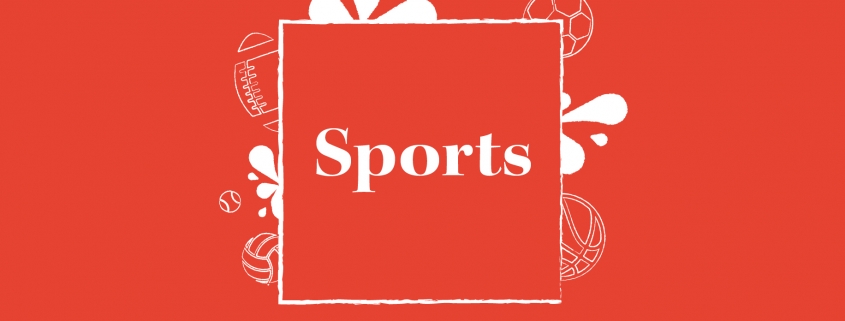The Medic: Pac-12 sports are postponed, but what about the health risks for other conferences?
When I first decided to write this column, I was overly optimistic that our University, the Pac-12 and the NCAA would create some type of strict protocol so that student-athletes — or at least USC and Pac-12 student-athletes — would have the opportunity to play this fall. I had all sorts of ideas for my articles. But, on Aug. 11, the Pac-12 decided to postpone all athletics until spring. As a biological sciences major who is also pursuing minors in health policy and economics, I uncovered a unique intersection between the worlds of sports and medicine during this pandemic.
Although this disrupted some of my plans for this column, I believe this was a wise decision by the conference because it helped ensure the safety of its student-athletes. Many schools in the Pac-12 are located in or near large metropolitan cities such as Los Angeles (USC and UCLA), the San Francisco-Bay Area (Stanford and Cal), Seattle (Washington), and Tucson (Arizona). So, unless student-athletes were regularly tested and kept in a well-built bubble (see the NBA bubble as an example), they would potentially infect many others in these cities while traveling all over the West Coast. Though USC and other Pac-12 schools now face significant financial losses, at the end of the day, it greatly alleviates the risk of student-athletes spreading the virus in some of the country’s hotspots.
Still, other conferences — most notably the SEC, Big 12 and ACC — are, for now, resuming sports for this season. Although many schools in these conferences are not located in large cities compared to the Pac-12, their decision isn’t immune to health and safety criticism.
As a Kansas native, the closest Power 5 school to me is the University of Kansas in Lawrence, Kan. The University is testing all students who wish to come back to campus so that no one who is infected with the coronavirus enters.
Although that sounds like an effective plan at first, this will eventually fail. For instance, USC’s rival Notre Dame, which implemented a similar plan to KU, recently had an influx of cases.
According to an Aug. 19 CBS News report, the South Bend, Ind. campus had at least 222 confirmed coronavirus cases two weeks into the semester resulting from off-campus parties.
Now, Notre Dame has switched to entirely online instruction due to this increase in cases. These seemingly isolated college towns prove that there will be severe health risks at all schools in these conferences, and we haven’t even mentioned the schools in larger cities such as Georgia Tech in Atlanta or the University of Texas in Austin.
Sure, the KU and Notre Dame infection spikes are not solely the responsibility of student-athletes, but these students who get infected at parties or other venues will inevitably come into contact with student-athletes who will compete at other schools, and so goes the transmission story.
Behind every student-athlete, there are a slate of at-risk coaches, trainers, equipment managers and the like. As we have seen in the past few months, this pandemic is built on a chain reaction. So, if these conferences and schools don’t want to be liable for further community transmission, the first step they should take is to either severely limit the number of students who can enter campus in the first place or make student-athletes reside, practice and compete far away from the general student body. On top of that, as I previously stated, these student-athletes must get regularly tested and be kept in a bubble, unless they are traveling to another school to compete.
As I hear all these other conferences planning to resume sports for the fall, another health-related danger on my mind is the approach of flu season. As you may have already heard from many health experts, the flu is going to make COVID-19 much worse.
“The worst-case scenario is we have a very active flu season that overlaps with the respiratory infection of COVID-19,” Director of the Institute of Allergy and Infectious Disease Dr. Anthony Fauci said in a recent interview with the American College of Cardiology. “That would really complicate matters from a diagnostic standpoint, from a therapeutic standpoint, and the standpoint of putting a lot of stress on the health care system.”
Even though many schools in the SEC have warmer climates and may not experience the flu as harshly, I know from experience that Kansas gets extremely cold come October, and northern ACC schools such as Pittsburgh and Boston College will be even colder. To say that a sports season is dangerous amid this epidemiological collide is an understatement.
In the interest of safety and health, the safest idea for the rest of these conferences is to follow the actions of the Pac-12 and Big Ten and postpone athletics until spring. Although I did provide some general health policies the conferences could put in place, they are still hard to achieve, especially considering the fact we’re talking about college students rather than professional athletes, making any strict or restrictive plan financially taxing.
If the Big 12, SEC, ACC and other conferences resume this fall, they should keep in mind the health of those involved in collegiate athletics as well as those who reside near the universities.
Pratik Thakur is a sophomore writing about sports and its intersection with health policy during the coronavirus pandemic. His column, “The Medic,” runs every other Tuesday.

